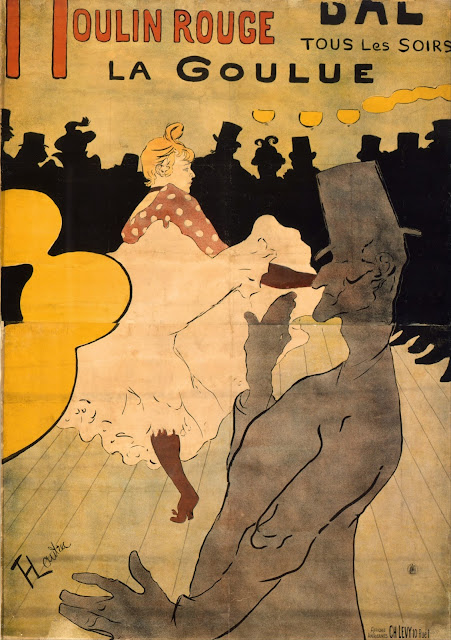I know before I've posted how to be creative with advertising (
see it here) but in this post let's talk about how advertising and art have been linked. Hopefully many of you watched the final episode of Mad Men this past Sunday, if not it's OK... but you should start watching Mad Men ASAP, and as viewers you would know when the advertising group (SC&P or McCann Erickson) would present their ad to their client they would really try and create a feeling sparked by the creative work. Art is just the same, art is only good if it creates a feeling within the viewer. Anyone can throw paint or charcoal at something, but if you can make someone
feel something and move them with the specifics of what you did or the meaning behind it, then you've done your job and your work should be in a museum.
Advertising and Art have always had a close relationship for the obvious reason, they're both visual ways of communicating something. The beginning of that is Henri Toulouse-Lautrec and his lithograph prints and posters specifically. Even though he was a very skillful Impressionist painter, draughtsman, and artist in general his work with prints of the dancers of Moulin Rouge are what started the connection between Art and Advertising.
Throughout Art History we do see a lot more artists attempting to make the connection between Fine Art and Advertising. Another successful artist who made the connection is Andy Warhol. He started out early doing ink blot drawings of shoes and ended up creating massive collaborations. We all know of his Campbell Soup Can...
 |
| Andy Warhol, Campbell's Soup Cans, screen print, 1962 Display view at MoMA, New York |
 |
| Andy Warhol, Absolut Vodka, screen print, 1986 |
Another artist who has combined with advertising is Norman Rockwell, like in this "Out Fishin'" Ad created for Coca Cola in the 1930s. This piece specifically creates a feeling and a world that you'd want to live in.
It's hard to tell when Art and Advertising combine which it better belongs to. They say any advertising is good advertising. Yet just a few lucky advertisers come along and create a feeling and a connection with the viewer that are memorable for many years to come. That is the connection with Fine Art and that is how you know you are a truly talented advertiser.














%2C_oil_on_canvas%2C_65.1_x_80.6_cm%2C_Minneapolis_Institute_of_Arts.jpg)

%2C_oil_on_canvas%2C_71.1_x_55.9_cm%2C_Tate_Modern%2C_London.jpg)
